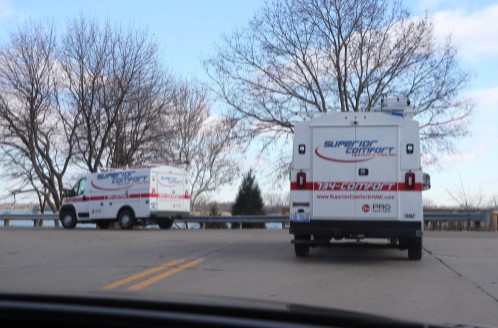It provides warmth and comfort. When it is not working as efficiently as before or if you think there’s something wrong, you won’t enjoy those chilly winter nights. With this in mind, call Superior Comfort Heating & Cooling to schedule your annual furnace inspection and tune-up ahead of time, helping you to avoid any potential problems that could arise during these harsh Michigan winters. Furnace inspections help keep your system consistent and ready for whatever Mother Nature might throw at us here in Grosse Ile MI – snow, rain, heat – whatever the season may be. If a problem should arise with your heating unit during routine maintenance, we can quickly diagnose the problem and do furnace repair Grosse Ile Michigan.

This is also the time to have the furnace cleaned by a professional, helping keep your system working at its best! These cleanings help prolong the life of your heating unit, making sure you’re getting quality performance from it well past its expected age. While a tune-up will not address any parts or components that are wearing down prematurely, they will make sure your furnace is running as efficiently as possible. So call Superior Comfort Heating & Cooling for all your seasonal maintenance needs in Grosse Ile MI – they serve customers throughout the area including Trenton, Brownstown Charter Township, Richmond, Wayne Townships and beyond!
Every furnace has two types of valves. The first type of valve controls the circulation of air inside the heating chambers; it’s usually located behind a metal plate right on top of your furnace (usually below or above your furnaces igniter). There is either one, two or three circular handles with corresponding dials that set the direction in which hot air will flow throughout your home. For example, setting all handles to “vent” will get hot air blowing out through the vents; setting both ‘up’ and ‘down’ at the same time will achieve more heat through radiators while less heat comes out through vents. You can achieve this by yourself but some models require you to go under-the-house because some valves are hard to reach. The other valve is located on the side of your furnace or somewhere else not so visible, often at the opening for where blower will keep blowing hot air. This one also has two handles but each handle either opens or closes vents to allow combustion gas through a specific opening.
To ensure your furnace runs properly, you have to clean it regularly just like any other machine that needs maintenance. You can’t simply turn it off every time you are done using it and expect that everything will be fine. It just won’t run smoothly unless you do something about all that dust getting trapped in there over time. Also, this way you’ll prevent yourself from having any unpleasant surprises such as mold growth inside your heating unit which sometimes causes dangerous situations. The furnace is a device that uses natural gas to generate heat by burning the fuel inside a flame assembly. In comparison, an electric furnace does not use a flame as the method of transferring heat from combustion gases to air. Air flow and temperature can be controlled in both types of furnaces, but electrical furnaces are different from their gas-powered cousins.
A conventional residential gas-fired heating system consists of four components: a heat exchanger, furnace fan blower, flue vent connector and chimney or vent pipe. Some manufacturers offer combination products that include all components except the chimney within one surrounding unit installed on the return ductwork located at ceiling level near your living room’s fireplace location. The heart of a gas heating system is the heat exchanger, which is a metal box containing a series of large tubes or pipes that conduct hot combustion gases from the burner to the surrounding air. As they pass through the heat exchanger, they transfer most of their heat energy to the surrounding air and exit through long metal flues inside the furnace’s casing.
Conventional furnaces can be operated by two different types of gas controllers: standing pilot or intermittent pilotless ignition systems. In both cases, there must be an auxiliary switch close to your furnace called a “limit control” for safety purposes. This switch blows cold air into your home if temperatures reach 60 degrees Fahrenheit or less in order to prevent water freezing in your indoor plumbing and preventing you from taking a hot shower.
Standing pilot ignition systems use natural gas to light the furnace’s burner. The system has an electrically operated, continuous pilot light that ignites the fuel when it flows into the combustion chamber through small orifices around the burner area. As long as there is sufficient airflow over the heat exchanger, temperatures will remain high enough to keep this small flame burning at all times; however, if airflow becomes inadequate due to clogs or dirty filters, draft problems or poor insulation, your standing pilot may go out and you’ll have no heat.
Once ignited by flowing gas from the main valve where your natural gas line enters your home’s distribution system piping inside your exterior wall, intermittent ignition furnaces ignite the gas and air mixture by a small electric spark. This system is part of your thermostat or control board, which turns on an electrical heat signal when it reaches a pre-set internal temperature setting within its bimetallic strip thermometer. As long as the supply of natural gas flows into the furnace through its main pressure regulating valve, your home will continue to be heated by this method.
Both types of furnaces have an automatic blower fan to circulate warm indoor air throughout your home. The blower assembly consists of a motor and blades mounted on a metal grille inside a housing attached near the furnace’s burner compartment.
